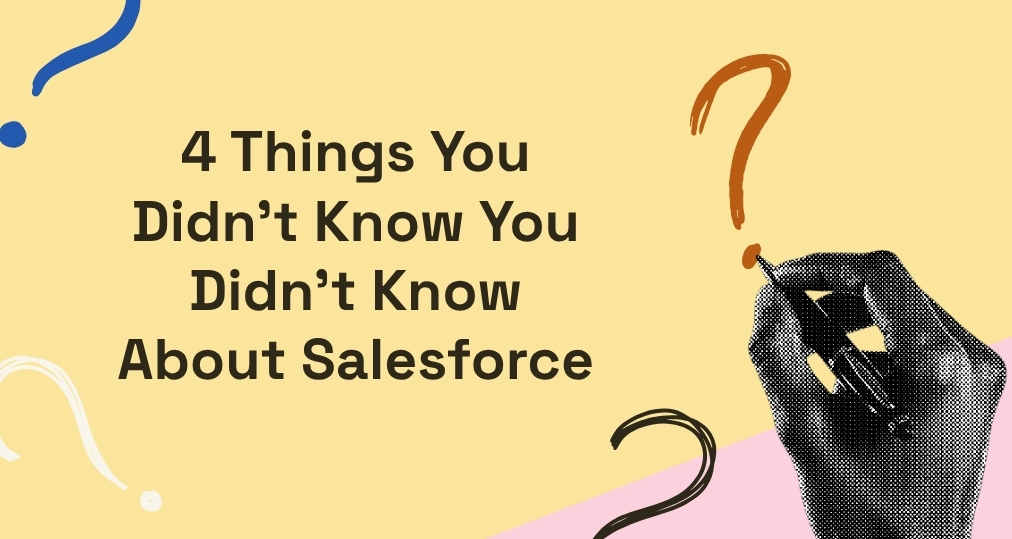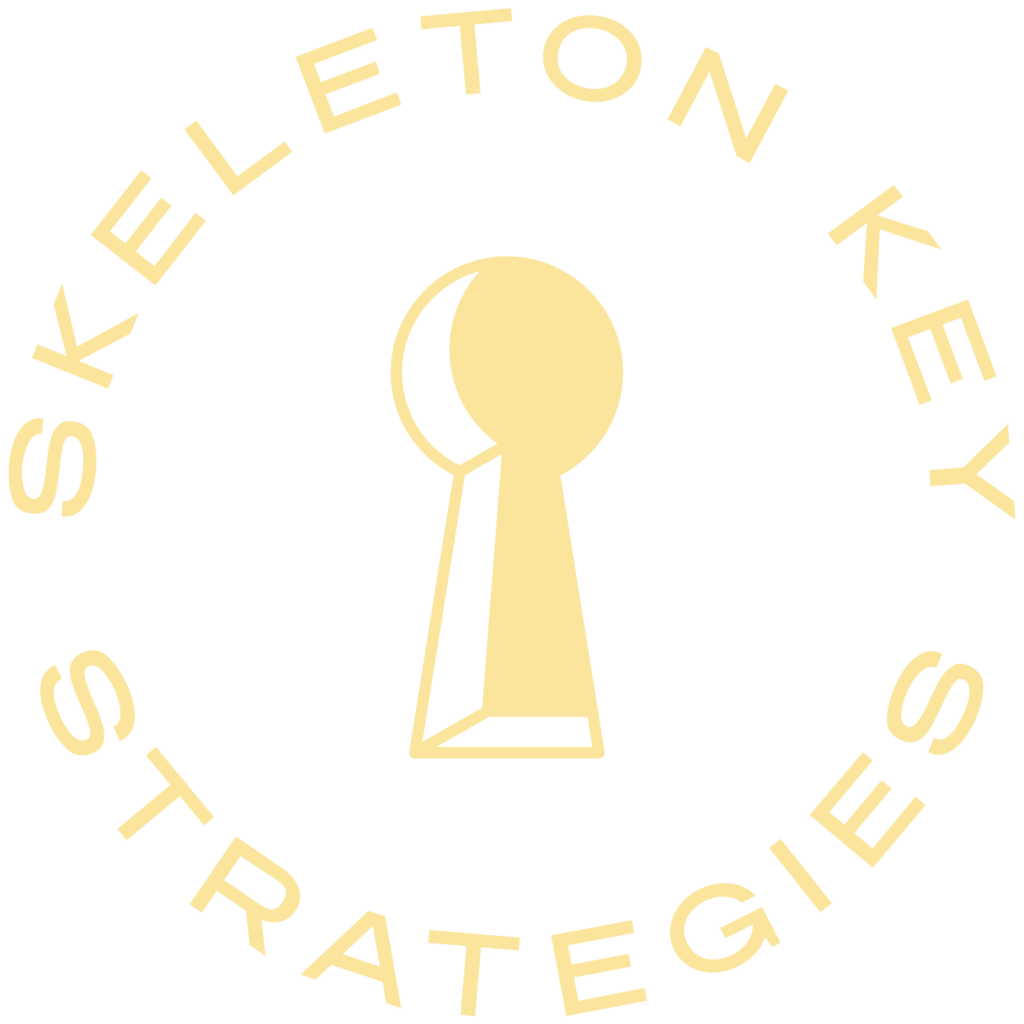At Skeleton Key Strategies, we specialize in helping nonprofits figure out the things they wish they’d known when they started using Salesforce.
#1: Grounding the CRM in Your Team’s Business Context
Salesforce was designed for corporate sales, and although much of its functionality can be adapted to suit nonprofit business needs, it’s not apples to apples. Before jumping into Salesforce and expecting it to solve all your problems, ask yourself these questions:
- What systems are my staff used to using to do their jobs? If their frame of reference is something like Raiser’s Edge – a product custom-built for nonprofit fundraising – what are their expectations about how easy Salesforce should be to use? When CRM solutions aren’t tailored to real-life workflows, or when there’s not enough time and training to support the team’s learning curve, tasks easily become harder to do than they were in previous systems.
- Is Salesforce helping solve our team’s highest-priority pain points? Salesforce is so appealing because it can be customized to do almost anything, and has tons of spiffy features, integrations, and automations that can level-up your fundraising and engagement. But sometimes Salesforce implementations go wrong when they prioritize shiny “nice-to-haves” over critical functionality that staff need to be clear, simple, and intuitive.
- How can Salesforce make Relationship Management as smooth as possible? While it’s built for relationships, nonprofits often struggle to see the full longitudinal, 360-degree history with their donors and supporters in Salesforce because it’s usually optimized for quick, transactional decisions. It’s hard for staff to enjoy the bells and whistles of Salesforce when they’re struggling to track simple interactions or pull a simple list of donors or gifts.
- How can we make it easier for staff to get data OUT of the system? Salesforce reporting is powerful – up to a point – and it can be tricky to learn. If relationship managers are used to pulling comprehensive reports referencing multiple objects with user-friendly query tools, how much additional training and support will be needed to make Salesforce reports useful to them?
Do these issues sound familiar? Especially compared to other nonprofit fundraising platforms, Salesforce can call for transforming the way your fundraisers work, so it’s critical to start with answering these existential questions.
#2: Expecting Changes to Ways of Working Together
Salesforce fulfills its highest value proposition when it’s adopted across integrated teams. But many organizations are used to working in silos, using separate systems and processes to manage activities that truly comprise a single, multi-department workflow. Optimizing Salesforce often requires teams to be willing to change their processes and adopt new ways of working together, so that the CRM serves as a cross-functional bridge instead of a wall. Here’s what we mean:
- The tech itself breaks down silos. It used to be that nonprofit software was built for one specific purpose, like fundraising, and staff used manual processes to hand off tasks between teams and share data between systems. Platforms like Salesforce are valuable because they are capable of implementing these processes in a single system, which can eliminate the effort, delays, and points of failure common with manual processes. For example, what if your Program, Fundraising, and Finance teams were all collaborating together on drafting a grant proposal in a single system? How much time, translation, and confusion would you save?
- Collaboration tools are baked in. Salesforce comes equipped with tons of tools that make it easier for cross-functional teams to work together, even asynchronously. A native mobile app, automated notifications, and Chatter – like social media conversations in your CRM – are all out-of-the-box features that make it easier for your staff to respond promptly to system updates without having to stay logged in all day.
- For example, if Finance has a question about a change in donation coding, what if they could ping the appropriate Development team member on the donation record in Salesforce rather than by email? Then Development can respond quickly in the same system where the change needs to be made, and the conversation is captured on the donation record for posterity.
- Tech and business teams have to partner up to maximize Salesforce’s ROI. Other donor databases are supported by the software vendor, not your IT team. Salesforce, on the other hand, is a customizable platform that your organization has to plan for, enhance, and maintain according to its own goals. This means IT becomes a strategic partner to your fundraisers and marketers, and together they create solutions jointly to meet evolving business needs, while using Salesforce best practices to keep the CRM scalable and performant. We explored this topic in partnership with CARE in a session at 25NTC. See our slides here.
Are you considering Salesforce and wondering how it might change your ways of working? Or if you’re using Salesforce, have you experienced any other changes to the way you work with your colleagues?
#3: Leveraging Salesforce Core Functionality
Nonprofits get excited by how customizable Salesforce is, but that’s also where we get into trouble. Just because you can make Salesforce do a certain thing doesn’t mean it’s the best idea. And for the sake of everyone’s sanity, please don’t rebuild your old donor database in Salesforce! Here are some things to do instead:
- Balance Customization with Native Functionality. Rebuilding your legacy database on Salesforce results in a clunky user experience that’s often worse than what you had before. Instead, leverage the robust features and pre-built solutions Salesforce comes with, which improve performance, keep the platform stable, and future-proof your investment so you don’t have to rebuild custom functionality over and over.
- Leverage Automation. Automate repetitive tasks to save time and improve efficiency. Utilize Salesforce workflows, process builder, and flow builder to streamline your processes. Get real-time notifications of new gifts and donor activity, automate email responses, schedule volunteers, and automate reports via email – have the system work for you rather than the other way around!
- Don’t Build *Everything* on Salesforce. Trying to use Salesforce for every type of business application can lead to complex and time-consuming development, potentially diverting resources from the organization’s core mission. By leveraging Salesforce’s native capabilities and integrating with specialized applications where needed, nonprofits can achieve a more efficient and effective solution tailored to their unique needs.
What other lessons have you learned for what to do, and what not to do, when building out Salesforce?
#4: Replacing Your Database Service Bureau
Most donor database software is designed to meet the standard needs of nonprofit fundraisers out-of-the-box. Those tools also typically come with a “service bureau” of additional managed service offerings for customers, including custom features, data management, marketing segmentation, and training and support. But when you move to Salesforce, you leave behind most of the “service bureau” – so how should nonprofits think about replacing that critical expertise and capacity?
- Think through your staffing model. Moving from an off-the-shelf CRM to Salesforce requires a comprehensive look at the experts you have on staff to manage the system. You’ll likely need business analysis and Salesforce product expertise to continue evolving the CRM to meet your users’ needs, and an in-house or outsourced technical team to help develop enhancements that improve usability and keep Salesforce optimized.
- Invest in training and support capacity. We cannot stress enough how important it is to dedicate in-house capacity to manage the major changes of moving to Salesforce. Proactive, responsive user support and documentation helps build your staff’s trust in the system, and tailored, workflow-based training (rather than point-and-click software training) helps your staff internalize how to use the CRM smoothly in their day-to-day lives.
- Identify key vendors and partners. Outsourcing to trusted consulting partners can help your organization scale your CRM affordably. Direct marketing services, advanced data analytics, and Salesforce technical development are all commonly outsourced by nonprofits. When partnered with your in-house business experts, these extra resources can help you move faster toward CRM innovation and data-driven decision making.
What other pro tips would you offer to other nonprofits considering Salesforce, or what CRM problems is your organization facing? If you’d like to chat about how Skeleton Key could help your organization, send us a note using the contact form below, or email us at greetings@skeletonkeystrategies.com.
Thanks for reading along, and we hope our insights have been useful!


